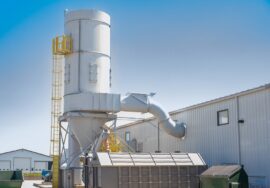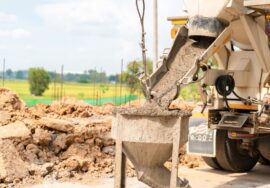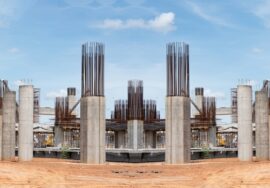
Clean Construction Technology for Sustainable Building
Clean Construction Technology for Sustainable Building
The construction industry is rapidly evolving to meet the global demand for sustainable infrastructure. One of the most promising advancements is clean construction technology — a set of innovative tools, techniques, and materials that reduce pollution, conserve energy, and improve efficiency on job sites.
As urbanization accelerates, adopting clean construction technology is no longer optional but essential for achieving environmental sustainability and economic efficiency in the built environment.
What Is Clean Construction Technology?
Clean construction technology refers to eco-friendly methods and equipment that minimize the environmental footprint of construction projects. It involves integrating advanced machinery, automation, green materials, and digital solutions to reduce emissions, energy consumption, and waste.
The core aim of clean construction technology is to build smarter, safer, and greener by leveraging innovation and sustainable practices throughout the project lifecycle — from planning and design to demolition and recycling.
Importance of Clean Construction Technology
The conventional construction process often contributes to air pollution, noise, carbon emissions, and waste generation. However, with clean construction technology, these impacts can be dramatically reduced.
Here’s why clean technology is crucial:
-
Reduces Pollution: Minimizes dust, noise, and chemical emissions.
-
Enhances Energy Efficiency: Promotes low-energy operations through renewable sources.
-
Supports Green Certification: Helps projects achieve LEED certification and similar standards.
-
Improves Worker Safety: Reduces manual labor risks through automation.
-
Promotes Sustainability: Aligns with national and global environmental goals.
Adopting clean construction technology ensures that the industry contributes positively to environmental protection and sustainable development.
Key Components of Clean Construction Technology
Modern clean construction technology integrates digital innovation with eco-friendly practices. Below are its main components:
1. Low-Emission Equipment
Machinery powered by electricity, hybrid systems, or biodiesel reduces greenhouse gas emissions. Using low-emission construction equipment also helps improve air quality on-site.
2. Building Information Modelling (BIM)
BIM enables accurate digital simulations that reduce design errors, material waste, and unnecessary energy use — a major part of clean construction technology.
3. Prefabricated and Modular Construction
Prefabrication minimizes site waste and shortens project timelines, leading to cleaner and more efficient construction processes.
4. Recycled and Eco-Friendly Materials
The use of eco-friendly construction materials, such as recycled steel, bamboo, and fly ash concrete, reduces resource depletion and landfill waste.
5. Smart Monitoring Systems
Sensors and IoT devices monitor emissions, water use, and energy efficiency in real-time, enhancing the overall impact of clean construction technology.
Clean Construction Initiatives in India
India is making significant strides toward adopting construction technology in its urban and infrastructure projects. The National Clean Air Programme (NCAP) launched by the Ministry of Environment, Forest and Climate Change (MoEFCC) emphasizes reducing construction-related dust and emissions in major cities.
Additionally, initiatives such as the Green Rating for Integrated Habitat Assessment (GRIHA) and LEED India promote cleaner, energy-efficient building practices. These programs encourage the use of sustainable materials, waste management, and renewable energy in construction.

Benefits of Construction Technology
Implementing construction technology offers wide-ranging advantages:
-
Environmental Protection: Reduces carbon footprint and preserves natural ecosystems.
-
Operational Efficiency: Lowers fuel and material consumption.
-
Regulatory Compliance: Meets CPCB and MoEFCC pollution control norms.
-
Cost Savings: Reduces long-term maintenance and energy costs.
-
Enhanced Brand Image: Demonstrates commitment to green and responsible construction.
Ultimately, construction technology leads to smarter, safer, and more sustainable urban growth.
Integrating Clean Technology with Sustainable Construction
To fully leverage construction technology, it should be integrated with other sustainable practices like stormwater management, erosion control, and hazardous waste disposal.
Using smart building technology and data-driven tools ensures resource efficiency, while adopting renewable energy and energy-efficient designs further minimizes the environmental impact. Together, these solutions help create net-zero energy buildings and eco-friendly infrastructure.
Partner with AMS India for Sustainable Building Solutions
At AMS India, we specialize in modern and construction technology solutions that reduce emissions, enhance safety, and optimize performance.
Our team provides expertise in pollution control, waste management, and resource efficiency, helping clients build responsibly and meet India’s evolving environmental standards.
Conclusion
Embracing clean construction technology is a powerful step toward achieving sustainable and smart construction. From low-emission machinery to digital modeling and green materials, these innovations reshape how buildings are designed and constructed.
By implementing clean technologies, developers can minimize environmental impact, improve efficiency, and contribute to a greener and more resilient future for the construction industry.
Read more related articles to enhance your knowledge and make informed decisions
Cost-Effective Modular Construction: Fast, and Sustainable Building Solutions
Smart Modular Buildings: Innovative, Efficient, and Sustainable Construction








